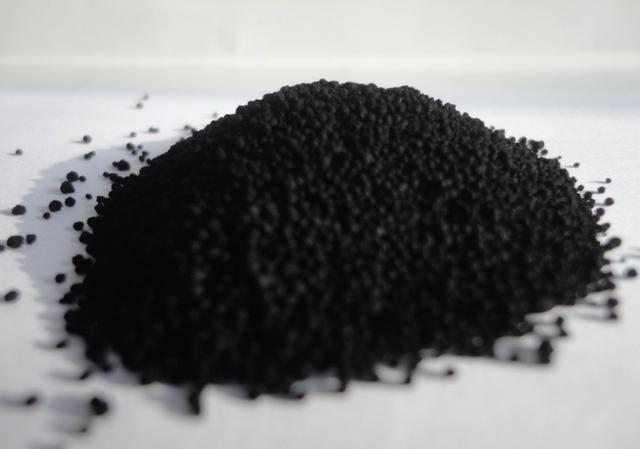Graphene Oxide in Electronics and Information Technology: Revolutionizing Transparent Conductive Films, Sensors, and Printed Electronics
Graphene oxide (GO), a two-dimensional material derived from graphene, exhibits extraordinary properties such as high electrical conductivity, excellent mechanical flexibility, and tunable chemical functionality. These characteristics make it an ideal candidate for various applications in the electronics and information technology sectors. From transparent conductive films for touchscreens to advanced sensors and printed electronics, graphene oxide is transforming the way modern electronic devices are designed and operated. This article delves into its introduction, advantages, applications, and current market trends.

1. Transparent Conductive Films
Transparent conductive films (TCFs) are essential components in modern electronics, especially in devices like touchscreens, flexible displays, and electronic paper. Traditional materials like indium tin oxide (ITO) dominate the market but face challenges such as brittleness, limited flexibility, and high production costs. Graphene oxide has emerged as a promising alternative for transparent conductive films due to its exceptional electrical, optical, and mechanical properties.
Advantages of GO in TCFs
- High Transparency and Conductivity: Graphene oxide thin films exhibit excellent optical transparency and electrical conductivity, making them suitable for optoelectronic applications.
- Mechanical Flexibility: Unlike brittle ITO, GO-based films are highly flexible, enabling their use in foldable and rollable electronic devices.
- Cost-Effectiveness: GO can be produced using scalable chemical methods, reducing the overall cost compared to rare materials like indium.
Applications in Transparent Conductive Films
- Touchscreens: GO-based TCFs provide superior sensitivity and durability for touch interfaces in smartphones and tablets.
- Flexible Displays: Emerging technologies like foldable OLED screens benefit from the flexibility and robustness of GO films.
- Electronic Paper: GO enables the development of lightweight and energy-efficient electronic paper for e-readers and digital signage.
Market Potential
The global transparent conductive film market is rapidly growing, driven by the increasing demand for flexible and wearable electronics. Companies investing in graphene oxide for TCFs are well-positioned to capitalize on this trend, as GO provides a sustainable and high-performance alternative to ITO.
2. Sensors
Graphene oxide’s unique structure and high surface area make it an excellent material for developing advanced sensors with exceptional sensitivity and selectivity. Its ability to interact with various molecules through functional groups enables a wide range of sensing applications.
Advantages of GO in Sensors
- High Sensitivity: The high conductivity and tunable surface chemistry of GO allow it to detect minute changes in environmental conditions or chemical composition.
- Selectivity: Functional groups on GO can be tailored to interact with specific target molecules, improving the accuracy of detection.
- Rapid Response: GO-based sensors exhibit fast response times, making them suitable for real-time monitoring.
Applications of GO Sensors
- Gas Sensors: GO can detect gases like ammonia, carbon dioxide, and hydrogen at very low concentrations, making it valuable for environmental monitoring and industrial safety.
- Humidity Sensors: Its hydrophilic nature makes GO highly effective in detecting changes in humidity, useful in climate control systems and agriculture.
- Biosensors: GO is widely used in healthcare for detecting biomarkers, pathogens, and glucose levels, aiding in early diagnosis and disease monitoring.
Market Trends
The sensor market is witnessing rapid growth due to the increasing need for real-time data in industries like healthcare, environmental monitoring, and IoT devices. Graphene oxide-based sensors are gaining traction as they offer unparalleled performance in terms of sensitivity, durability, and scalability.
3. Printed Electronics
Printed electronics represent a cutting-edge approach to manufacturing electronic devices using printing techniques such as inkjet or screen printing. Graphene oxide has emerged as a key material in this field, enabling the creation of flexible, lightweight, and cost-effective electronic components.
Advantages of GO in Printed Electronics
- Scalability: GO inks can be easily prepared and printed using existing technologies, allowing mass production of electronic components.
- Flexibility and Durability: Devices made with GO are lightweight, foldable, and resistant to mechanical stress, ideal for wearable and portable applications.
- Customizability: GO inks can be engineered to achieve specific electrical and mechanical properties, catering to diverse application needs.
Applications in Printed Electronics
- Flexible Circuit Boards: GO is used to create highly flexible PCBs for wearable devices and medical implants.
- Wearable Devices: GO’s mechanical and electrical properties make it ideal for sensors and circuits in fitness trackers and smart textiles.
- RFID Tags: GO enables the production of cost-effective and durable RFID tags for inventory management and logistics.
Market Growth
The printed electronics market is expected to grow exponentially as industries like healthcare, automotive, and consumer electronics adopt flexible and cost-efficient solutions. GO’s role in this growth is significant, as it offers a sustainable and high-performance alternative to traditional materials.
Conclusion
Graphene oxide is revolutionizing electronics and information technology by addressing the limitations of traditional materials and enabling new possibilities in transparent conductive films, sensors, and printed electronics. Its advantages in terms of performance, flexibility, and scalability make it a highly attractive material for next-generation electronic devices.
As industries continue to innovate, the demand for advanced materials like graphene oxide will only increase. From enabling foldable smartphones and wearable health monitors to supporting smart infrastructure and IoT, GO is poised to play a pivotal role in shaping the future of electronics and information technology. With ongoing research and market adoption, graphene oxide will undoubtedly remain at the forefront of electronic material advancements.

